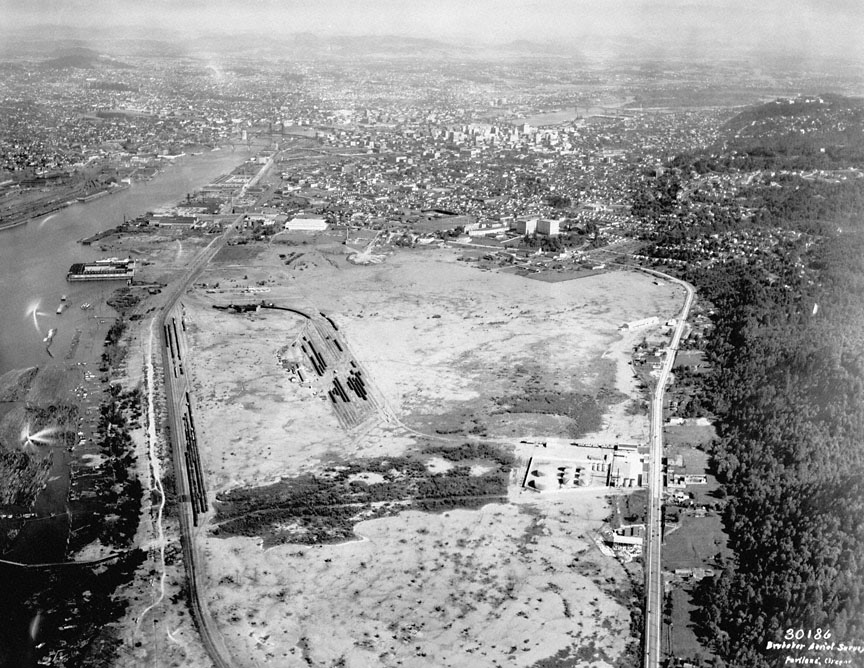- Catalog No. —
- OrHi 64447
- Date —
- 1930
- Era —
- 1921-1949 (Great Depression and World War II)
- Themes —
- Geography and Places
- Credits —
- Oregon Historical Society
- Regions —
- Portland Metropolitan
- Author —
- Brubaker Aerial Surveys
Guild's Lake Area, 1930
Between 1906 and the mid-1920s, Guild’s Lake was filled in with soil sluiced off the hillsides and dredged from the Willamette River. A series of developers, land speculators, railroad officials, and Port of Portland board members doggedly pursued a plan to transform the former Lewis and Clark Exposition fairgrounds into an industrial center. This June 1, 1930, photograph of that area was taken by Brubaker Aerial Surveys.
Despite some suggestions that the land around Guild’s Lake become a city park, schemes to fill in it began before the fair was even over. During the summer of 1905, developer and former-Colorado Congressman Lafayette Pence first started using water from Balch Creek to wash away the hillsides and develop the Westover Terrace neighborhood. By 1907, Pence—who was working with local and eastern investors—was using flumes to move 1,000 to 2,000 yards of soil a day from the hills into the lake. While legal problems and financial ruin grounded Pence in 1908, a different company took over the project in 1909. Seattle hydraulic contractors Charles Wiley and William Lewis finished the Westover Terrace project, and by 1913, had filled in at least fifty acres of Guild’s Lake for an industrial center near 29th Avenue and Nicolai Street.
In the early 1920s, the Port of Portland filled in the rest of the lake with more than twenty million cubic yards of dredge material from the Willamette River. The Port deepened the west side of the river and closed off the former shipping channel on the east side of Swan Island. Many of the Guild’s Lake property owners, which included the Northern Pacific Terminal Company—a consortium of railroad companies—and Reed College, paid for the fill by giving the Port portions of their land.
By 1930, the Terminal Company had built a switching yard on the fill and several industries had also moved in.
Written by Kathy Tucker, © Oregon Historical Society, 2003.
